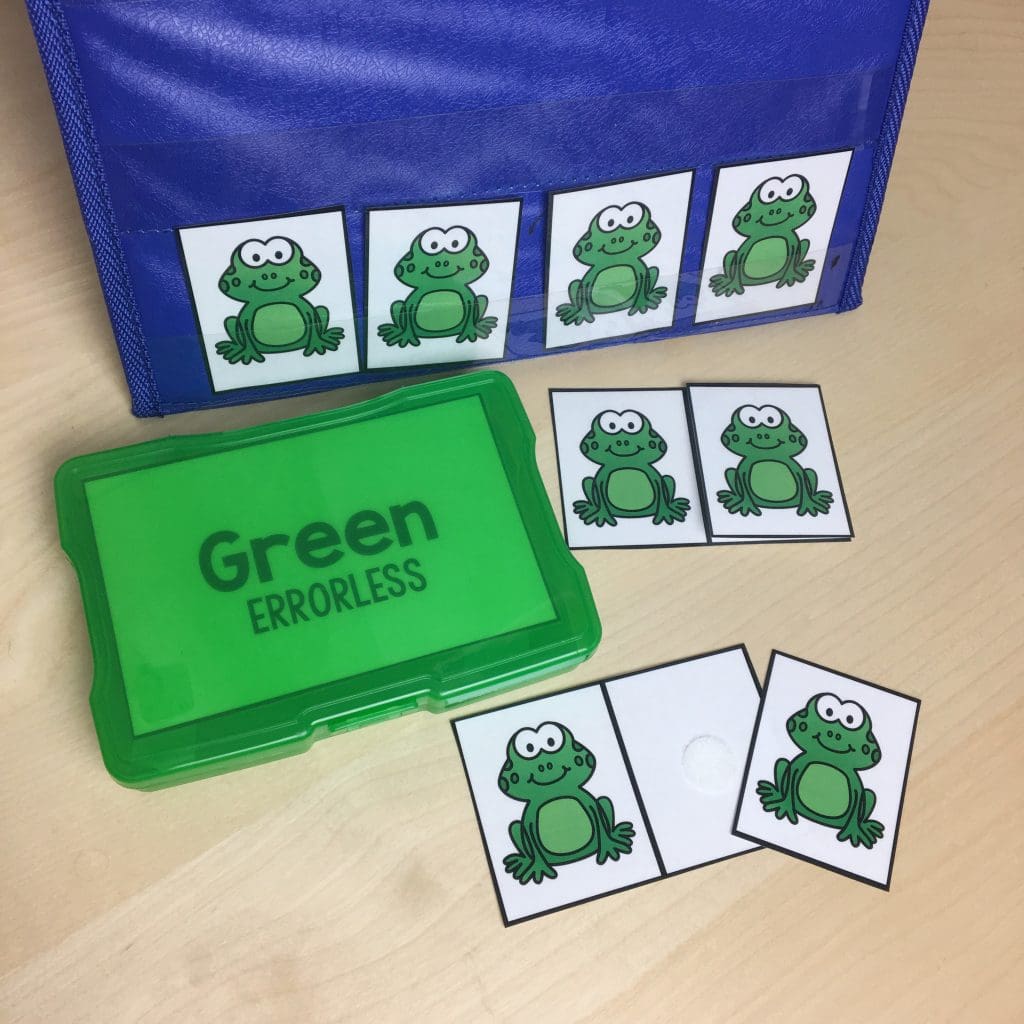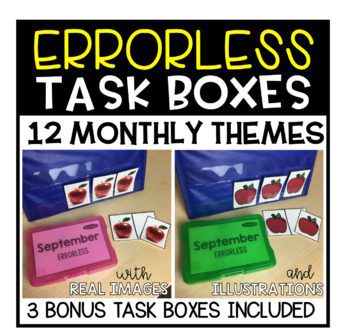When it comes to learning, focusing on finding the “right” answer isn’t always the best approach. There are powerful lessons in practicing a new skill and growing a student’s ability and confidence in working independently. Errorless task boxes are a great way to provide this practice while taking the pressure off by eliminating the chance of being “wrong.” Get started with these ways to use errorless activities in the primary classroom!
What are Errorless Task Boxes?

Errorless Task Boxes are tasks where students engage in different lessons and activities without having wrong answers. The errorless task boxes have many options for a variety of content areas to let your students learn and explore!
Errorless Task Box Activities
With the help of some lamination and Velcro magic, your students can pack a pretend lunch or go on a pretend picnic. Practice completing sentences about the seasons or places. Again, there is no wrong answer! With the help of snowmen, ladybugs, pumpkins, and more, your students practice counting from one to six. They also explore seasonal activities, taking a cast of colorful characters to play in the snow or at the beach. Errorless activities also allow for completing simple patterns.
In addition, errorless activities incorporate other lessons, too. Your students learn about emotions, what community helpers do and where they work, what animals live in different environments (in the Arctic, in the woods, at the zoo), and how to be a kind friend. Errorless activities are hands-on, imaginative and meaningful fun!

This set includes 15 errorless task boxes, one for each calendar month, plus three bonus task boxes. Each errorless activity includes discrete level indicators. All task boxes include a set of illustrations, as well as a set with stock photos to engage a variety of learners and connect lessons back to everyday life.
Errorless Task Box Tips
Here are some helpful tips for making the most of errorless task boxes.
Start Slow
Each task box is designed for beginning learners and aimed at helping them develop independent learning skills. Use the level indicators and decide which activities each student can manage. Build onto their tasks and the number of cards they can manage in each activity as they become more comfortable.
Model for Success
When introducing errorless task boxes to your students, teach expectations by modeling. Develop a routine from where to retrieve their errorless task box to sitting down and how to complete each activity. The repetition in the work will allow for the fading of prompts.
Hard Work Pays Off
Errorless task boxes allow your students to build confidence in their skills. Verbal praise and rewards for hard work can help keep learning momentum. Decide what works best in your classroom, whether access to a preferred activity, a coveted classroom role, or physical tokens like a sticker or a miniature “desk pet” animal eraser. You know what incentivizes your students best.
Who doesn’t feel more engaged in an activity when they understand what is expected of them and know they can be successful? Errorless learning can build your students’ confidence and motivation and even reduce behaviors. You can’t go wrong with using them in your primary classroom!
Leave a Reply